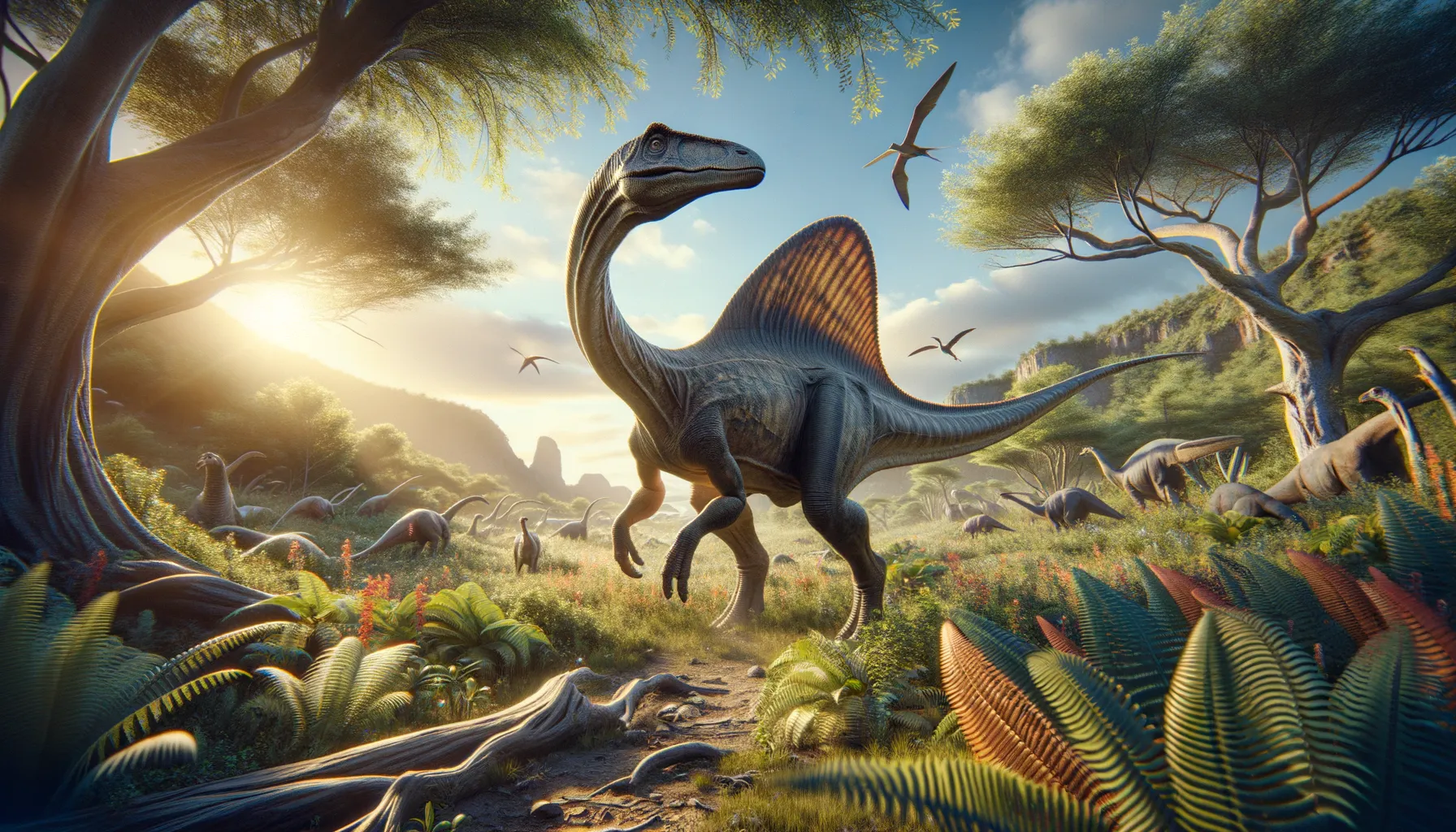
Parasaurolophus
Crested marvel of the prehistoric world!
Period
Cretaceous
Length
Around 10 meters in length.
Height
Up to 4 meters tall.
Weight
Approximately 2.5 tons.
Parasaurolophus was a herbivorous dinosaur known for its distinctively long, backward-curving cranial crest, which might have been used for communication or display. Living during the Late Cretaceous period, it inhabited what is now North America. These dinosaurs could move bipedally and quadrupedally, allowing them flexibility in foraging and evasion. It was a part of the Hadrosaur family, commonly referred to as duck-billed dinosaurs due to their flat, broad beaks.
Diet
Parasaurolophus was an herbivore, feeding primarily on plant material such as leaves, pine needles, and branches. Its teeth and jaw structure were designed for grinding tough plant matter, which it likely processed in large quantities to sustain its size.
Hunting
As an herbivore, Parasaurolophus did not hunt but needed to be wary of carnivorous dinosaurs. It likely relied on its speed and group living to avoid predators that roamed its territories.
Environmental challenges
Parasaurolophus faced challenges such as varying climates during the late Cretaceous, which could impact the availability of its food sources. Seasonal changes might have forced these dinosaurs to migrate in search of more abundant resources. Predation was another challenge, as carnivores would target young or weaker individuals. Adapting to these challenges would have been crucial for their survival, influencing their migratory patterns and habitat selection.
Speed
Moderate, with bursts to escape predators.
Lifespan
Estimated to live up to 20-30 years.
First discovery
Discovered in 1920 in Alberta, Canada.
Fun Facts
- Parasaurolophus is known for its long, backward-curving tube-like crest that may have been used to make sounds or for display.
- It lived around 76 to 73 million years ago during the Late Cretaceous period.
- Parasaurolophus means 'near crested lizard,' referencing its distinctive crest.
- This dinosaur was a herbivore, primarily feeding on leaves, pine needles, and plant matter.
- Parasaurolophus could walk on both two legs and four, making it a versatile mover.
- Some scientists believe that the crest could have helped regulate body temperature.
- Fossils of Parasaurolophus have been found in North America, particularly in Canada and the United States.
Growth and Development
Parasaurolophus hatchlings would have been considerably smaller and vulnerable, growing rapidly under the care of adult dinosaurs. Their growth phases saw significant changes as they developed their iconic crests, which became more pronounced as they matured. This crest likely played a role in social communication and species recognition among the herd.
Habitat
Parasaurolophus inhabited diverse environments across what is now North America, including forests and floodplains. They were well-suited to areas near water sources, where plant life was abundant. Their habitats would have provided ample food and protection, though these environments could change drastically with climate shifts.
Interaction with other species
Parasaurolophus likely interacted cooperatively with other herbivorous dinosaurs, forming mixed-species herds for greater protection. They also had to be vigilant of various predators in their ecosystem, which sharpened their social instincts. The duck-billed dinosaur might have used its crest in these interactions, either to communicate danger or coordinate movement.
Natural lifespan
Parasaurolophus had a natural lifespan of around 20–30 years.
Reproduction
This dinosaur reproduced by laying eggs, strategically placing them in nests on the ground or in shallow pits. Parental care is assumed to have been evident, with adults protecting and nurturing of their young. The young might have stayed with the herd for extended periods, benefitting from protection and learning vital survival skills.
Social behaviour
Parasaurolophus is believed to have been a social animal, often living in groups, which offered many advantages like protection against predators. Its distinct crest may have been an essential part of its social life, for producing sounds that signaled danger or communicated within the group. Social bonds were thus an integral part of Parasaurolophus's survival strategy.
Fossil locations
Parasaurolophus fossils have been found in areas across North America, notably in Alberta, Canada, and regions of the United States like Utah and New Mexico. These discoveries provide insights into their range and habitat preferences. Each fossil discovery helps paleontologists understand more about these fascinating creatures, from their physical characteristics to their broader ecological roles.
